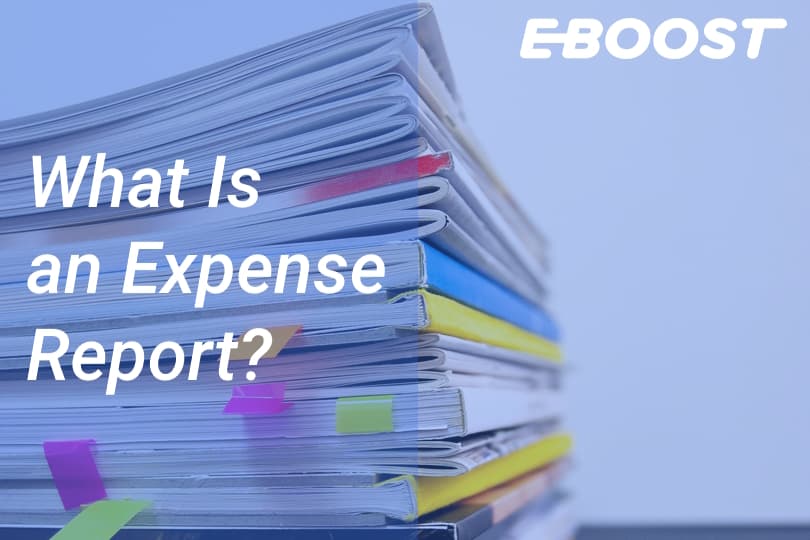
An essential financial document, an expense report, is used by businesses and organizations to monitor and manage their expenses. It is a comprehensive record of all expenditures made by employees or representatives on behalf of the organization.
In this article, we will explore the specifics of an expense report, including its significance, creation process, and what expenses are incorporated.
What’s Included in an Expense Report?
An expense report itemizes various expenses incurred by employees during business-related activities or trips. These expenditures can range from transportation and lodging to meals and incidental expenses.
Expenses included in a small business expense report will vary from organization to organization, but typically comprise transportation costs, lodging expenses, meals, entertainment costs, and office supplies.
An expense report also includes the dates of the trip, the names of those involved, and the purpose of the trip or activity. Additionally, it may feature documentation such as receipts or other relevant paperwork.
Why Are Business Expense Reports Important?
Expense reports have several benefits, including providing an accurate and comprehensive record of employee expenses on behalf of the organization. By doing so, companies can ensure employees comply with their travel and expense policies and address any unauthorized or excessive expenses.
Monthly expense reports also serve as essential tax and accounting documents; by itemizing business-related expenses to be deducted from the organization’s taxable income, the overall tax liability is lowered.
By recording travel, entertainment, office supplies, and other business-related expenses, expense reports help track and manage company costs. By monitoring these expenses, companies can identify areas where they can reduce costs or streamline processes, and plan budgets accordingly.
Expense reports for small business enterprises also facilitate informed decisions on resource allocation, for instance, by discovering overspending on travel or client entertainment and implementing cost-saving measures. Alternatively, if they are not spending enough on essential business expenses, such as professional development or marketing initiatives, they can adjust accordingly.
Moreover, expense reports play a crucial role in compliance and audit processes, ensuring businesses comply with relevant tax laws and regulations and remain prepared for audits or reviews. Lastly, expense reports can identify fraudulent or unethical behavior by employees, as they provide a detailed record of all expenses.
How to Create an Expense Report?
To create an expense report, relevant receipts and documentation must be gathered and organized comprehensively. This can be done through manual methods, such as spreadsheets or paper forms, or using specialized expense reporting software.
Accurate and detailed expense recording and proper receipt storage are crucial for comprehensive reports. Streamline expense reporting with receipt organization and dating. Employ software for expense entry and authentication. Enhance decisions by closely examining spending patterns.
Collect all receipts and documentation related to the expenses.
- For future reference, contemplate acquiring receipts and documentation for all work-related expenses, such as hotel bills, invoices, or boarding passes.
- Store all receipts and documentation securely in an organized manner.
- Selecting digital receipts and documentation whenever possible is recommended. They offer greater convenience for organization and tracking compared to physical copies. Digital receipts’ smaller size and lower risk of loss make them effortless to access and organize. They also allow for prompt sharing, which is particularly useful for small business expense reports and financial records.
- If receipts or documentation are absent, a comprehensive review of credit card statements is crucial. Credit card statements give an overview of expenses, aid in detecting missed transactions, and guarantee all transactions are accounted for without discrepancies. Regularly scrutinizing statements detects/reporting fraud, ensuring legitimacy, identifying suspicious activity, and taking prompt action. Early reporting can prevent significant losses or damage.
See Also:
Create a spreadsheet or other document to track the expenses.
- Standardizing the format of expense reports is necessary for clarity and comprehension. To avoid confusion and ensure comprehension, it is crucial to include all necessary details and maintain consistency in reports. This overview provides a comprehensive breakdown of expenditures.
- Including all pertinent information in expense tracking documents is crucial for a precise depiction of expenses. It’s important to note the date, expenditure amount, vendor, and expense purpose. To improve report clarity and give a thorough and detailed overview of expenditures, consider supplementing with additional comments or notes.
- An expense report’s creation necessitates a crucial measure of categorizing expenses. It helps to track the different types of expenses and tally the totals for each category.
- Employ formulas and formatting in your expense tracking document to make calculations easier. Use formulas to automatically calculate category totals, or compute the overall expense amount.
- Periodically backup and save your budget monitor to retain a log of your expenditures in the event of inconsistencies or issues.
Enter the details of each expense, including the date, amount, and purpose.
- Guarantee the precise recording of the date for each spending item in the document to establish a distinct chronology of when every cost was acquired. This information may be required for tax or accounting purposes.
- Note down the entire expenditure for each cost, encompassing any levies or surcharges sustained, in the summary. It’s crucial to guarantee precision when inscribing the value since it’s utilized to compute the entire expense of the journey or undertaking.
- Provide a clear explanation of why each expense was incurred by recording its purpose in the report. Suppose, if a repast was procured whilst on an official excursion, incorporate the rationale of the meal (e.g., a professional conference with a patron).
Categorize each expense according to the appropriate category (e.g. transportation, lodging, meals, incidentals).
- Provide a clear explanation of why each expense was incurred by recording its purpose in the report. For instance, if a meal was purchased while on a business trip, include the purpose of the meal (e.g., a business meeting with a client).
- A chart of accounts is a comprehensive list of all the different expense categories recognized by the organization. Utilize the chart of accounts as a reference when categorizing expenses to ensure consistency and accuracy.
- Ensure to maintain detailed records of the purpose of the expense, the date, and the amount while collecting receipts and other relevant documentation. This will assist in correctly categorizing expenses.
- Label expenses descriptively. Use clear titles like “client dinner” or “team lunch”. This provides context and helps track funds. Stay organized and informed.
- Use the same categories and labels for similar expenses to maintain consistency and guarantee an accurate and understandable report.
After you’ve done the previous steps, add up the expenses by category and then by the overall total.
What Are Considered “Expenses,” and What Are the Different Categories They Fall Under?
Outlays can encompass a vast array of dissimilar costs that are sustained whilst conducting business-linked operations. Presented below are a few instances of familiar expenditures and their respective categories:
- Transit disbursements – This may comprise expenses connected to air travel, hired automobiles, taxicabs, and additional modes of conveyance.
- Lodging expenses – This includes the costs associated with hotel stays or other forms of accommodation.
- Meal expenses – This includes the cost of meals eaten while on a business trip or conducting business-related activities.
- Auxiliary expenses – This encompasses other assorted expenditures, such as parking tariffs, tolls, and gratuities.
Expense reports typically require that these expenses be separated by category, so it’s important to keep track of them accordingly.
What Are Expense Reports Used For?
Expense summaries aid various objectives for a company. One is ensuring policy adherence, curbing unauthorized expenses, and detecting cost-reduction opportunities. Additionally, they offer valuable insights into spending trends and enable budgetary measures implementation. Moreover, expense reports help with tax and accounting by providing comprehensive logs of all business expenses, preventing penalties due to incomplete records.
Final Thoughts
To sum up, expense reports are an indispensable tool for businesses and organizations that aim to monitor and manage their expenses effectively. They offer a precise and comprehensive record of all the expenses incurred by an employee, and they can be utilized for multiple purposes, such as tax and accounting, compliance with policies, and cost optimization. By leveraging the data contained in expense reports, organizations can make informed decisions regarding their financial management and improve their overall financial health.
If you are looking for other ways to improve your company’s financial health, EBoost is here to help. Not only do we publish informative articles like this one, but we also offer an array of digital finance tools for businesses—from online banking to loans, we’ve got you covered.
Expense Report FAQ
To run an expense report, follow these steps:
- Gather all the necessary receipts and documentation for expenses incurred during the reporting period.
- Enter the expenses into a spreadsheet or accounting software program, making sure to categorize each expense correctly.
- Generate a report from the software or spreadsheet, specifying the date range for the report.
- Review the report for accuracy, ensuring that all expenses are included and categorized correctly.
- Make any necessary adjustments or corrections to the report.
- Save the report and submit it for approval to the appropriate person or department.
An expense report should include the date and purpose of the expense, the amount spent, the names of the individuals involved, and any supporting documentation such as receipts or invoices. It should also adhere to the company’s expense policy and any applicable tax laws.
